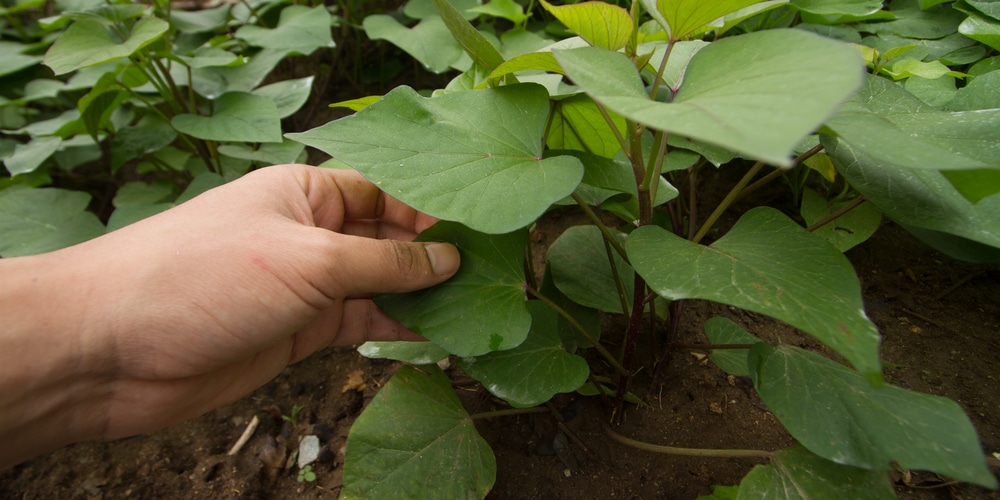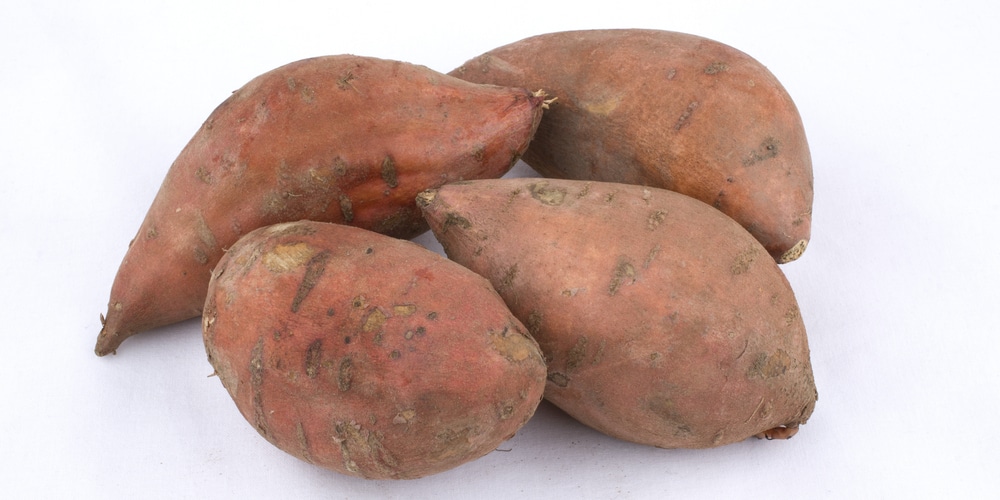If you’re an aspiring vegetable gardener, you want to know how to get the most out of your plants.
One crucial question is: how many sweet potatoes can you grow on one plant?
It’s important to note that the number of potatoes you can get per plant will vary depending on the variety of sweet potatoes you are growing and the climate and soil conditions in your area.
This blog post will give you tips on how to maximize your yield from each sweet potato plant!
How Many Sweet Potatoes Can You Grow on One Plant?
Researchers at Tokat Gaziosmanpaşa University in Turkey recently studied sweet potato plants, specifically their yield. The study found that each plant produces between 5 and 10 tubers per season. Each tuber typically weighs approximately 10.5 ounces (300 grams) for a total average yield per plant of 4.6 to 5.5 pounds (2.1 to 2.5 kilograms).
Can Climate Affect Yield?
They are a staple crop in many parts of the world, and their yield is highly dependent on climate conditions. Sweet potatoes require a frost-free growing season of at least 100 days, which puts them at a disadvantage in cooler climates.
They are best suited for USDA Zones 8 to 11, where the climate is warm and sunny for most of the year. Outside these zones, sweet potatoes will likely produce fewer tubers or even fail to produce any.
However, even in these ideal conditions, sweet potatoes can be susceptible to pests and diseases affecting their yield. As a result, growers must be vigilant in monitoring their crops and taking steps to prevent problems.
Despite these challenges, sweet potatoes remain a popular and nutritious food choice for many people worldwide.
Can Variety Affect Yield?
Can sweet potato yield be affected by variety? The answer may surprise you.
The answer is yes.
Studies have shown that the type of sweet potato can significantly impact the amount of yield produced. For example, the Kalem variety has an average of 7.20 tubers per plant, while the Hatay Kurmizisi has an average of 10.67. Hatay Yerlisi and Havuc varieties averages at 8 to 9 tubers per plant.
How to Get the Most Out of Your Sweet Potato Plant
Sweet potatoes are a versatile and delicious addition to any meal. They can be roasted, mashed, or even used in pies. And, best of all, they’re easy to grow! Whether a seasoned gardener or a beginner, here are a few tips to help you get the most out of your sweet potato plant.
First, make sure to choose a sunny spot for your plant. Sweet potatoes need at least six hours of sunlight per day. If you live in a colder climate, you may want to start your plants indoors and transplant them outside once the weather warms up.
Next, be sure to water your sweet potato plant regularly. The soil should be moist but not soggy. Over-watering can lead to fungal growth and root rot, so finding the right balance is important.
Finally, sweet potatoes are heavy feeders so that they will benefit from regular fertilization. Once every two weeks should be sufficient. Once your sweet potatoes are ready to harvest, pull up the plants and enjoy the fruits of your labor!
Harvesting And Storing Sweet Potatoes
Sweet potatoes are a delicious and nutritious addition to any meal, but did you know that they can also be stored for winter? Curing is crucial to storing sweet potatoes for winter successfully. Here’s what you need to do:
Harvest the potatoes in a dry period if possible. Try to minimize any damage to the tuber, as it invites mold, insects, and disease.
Lay out the tubers carefully and let them dry for ten days to 2 weeks in a warm location with high humidity.
After they have cured, store the sweet potatoes in a cool, dark, and dry place. Be sure to check on them periodically and remove any signs of spoilage.
With a little care, you can enjoy sweet potatoes all winter!
Conclusion
While climate and variety can affect sweet potato yield, several other factors can also influence the number of tubers produced by a plant. These include the age and health of the plant and the quality of the soil in which it is grown.
With proper care and attention, you can maximize your chances of getting a good sweet potato crop, no matter what variety you are growing.


